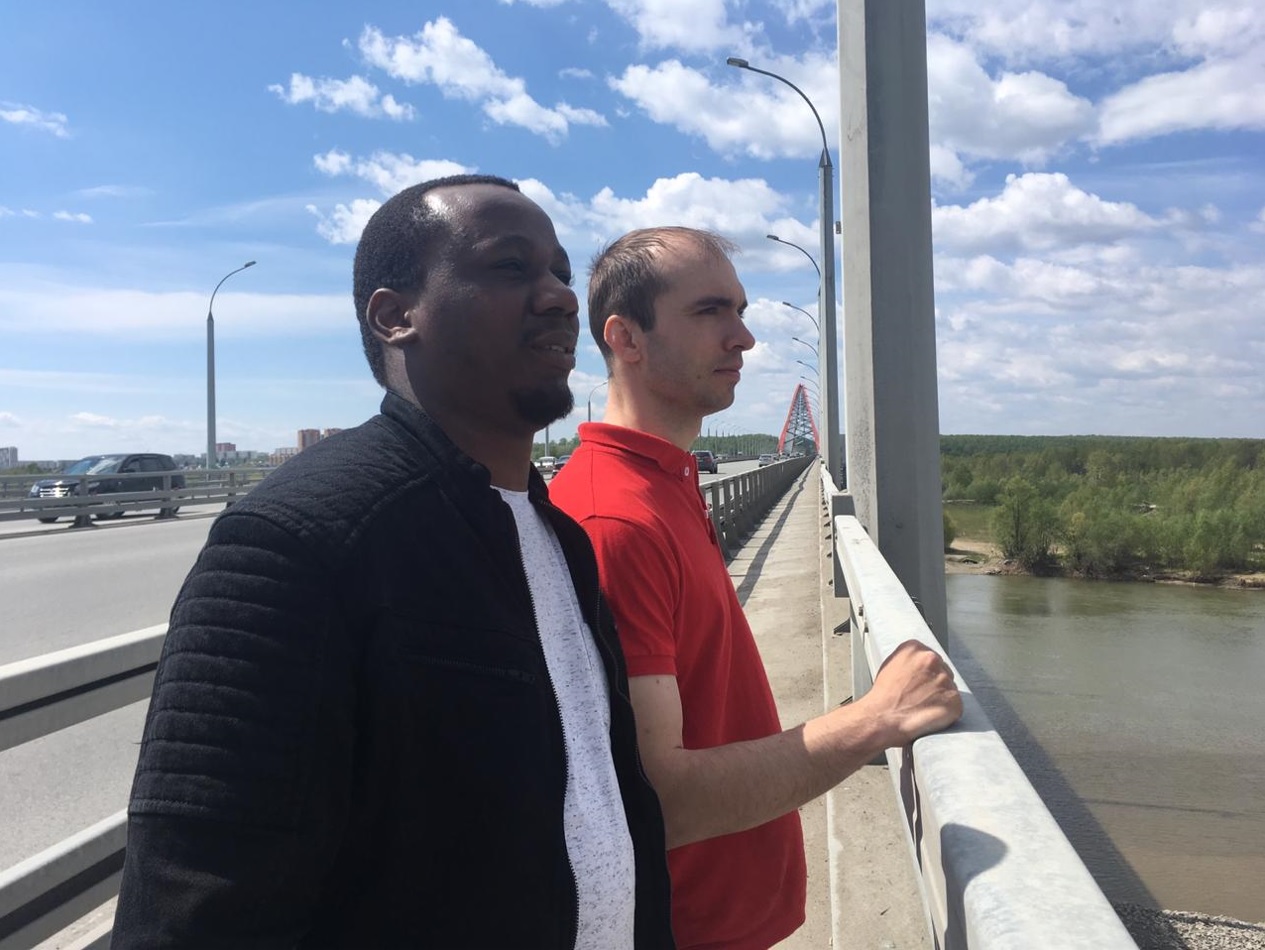Within the postgraduate training program at the Trofimuk Institute of Petroleum Geology and Geophysics SB RAS, a preliminary defense of PhD dissertation in geology and mineralogy (Russian equivalent : Dissertation for the degree of candidate of geological and mineralogical sciences) took place at the geophysical seminar.
Luckymore Ngomayezwe, Zimbabwe, a postgraduate student of Novosibirsk State University, made a presentation on application of the method of standing waves, which is a passive seismic method (i.e. without the use of vibration sources), to solving problems of engineering seismology.
The research work is aimed at developing the technology for structural engineering inspection (for timely recording changes of dynamic characteristics of constructions by means of non-destructive engineering-seismological monitoring of the structure). Konstantin Fedin, PhD (tech), a senior researcher from Laboratory of Dynamic Analysis in Seismology, IPGG SB RAS, was appointed the scientific supervisor of Luckymore’s PhD thesis.

L. Ngomayezwe and K. Fedin carrying out measurements on Bugrinsky Bridge (Novosibirsk)
Luckymore Ngomayezwe presented results of the field experiments conducted on five real objects to evaluate capabilities of the standing wave method.
Thus, a method for determining ice sheet thickness and type of the underlying medium has been developed and tested, which also showed effectiveness of the proposed method for delineating cave vaults and determining their depths. In addition, various possibilities of using the standing wave method to detect voids and the presence of soil decompression under concrete face slabs of dams, and hydraulic structures (gravity dams) were investigated. Among them, a possibility of using the passive seismic method for damage diagnosis in transport structures (e.g. structural health monitoring of bridges ) was also evaluated.
The considerable thing is that these inspections are not solely reserved for aging or visibly damaged structures, but are a proactive measure to catch problems early and prevent potential future disasters.
The presentation aroused great interest among the audience. The questions and / or comments were made by V.N. Glinskikh, RAS corr. member, D.V. Metelkin, RAS corr. member, A.F. Emanov, D. Sc. (Tech), V.D. Suvorov, D. Sc. (geol.-mineral), B.P. Sibiryakov, D.Sc. (phys.-math), M.I. Protasov, D.Sc. (phys.-math), V.A. Cheverda, D.Sc. (phys.-math), V.S. Seleznev, D. Sc. (geol.-mineral), Yu.I. Kolesnikov, D. Sc. (Tech), A.A. Duchkov, Ph D (phys.-math), S.S. Abramenkov, PhD (phys.-math). The valuable recommendations received from the knowledgeable specialists will be taken into account in further work on the dissertation.
Published by IPGG Press Service
Photograph from IPGG Photo Archive